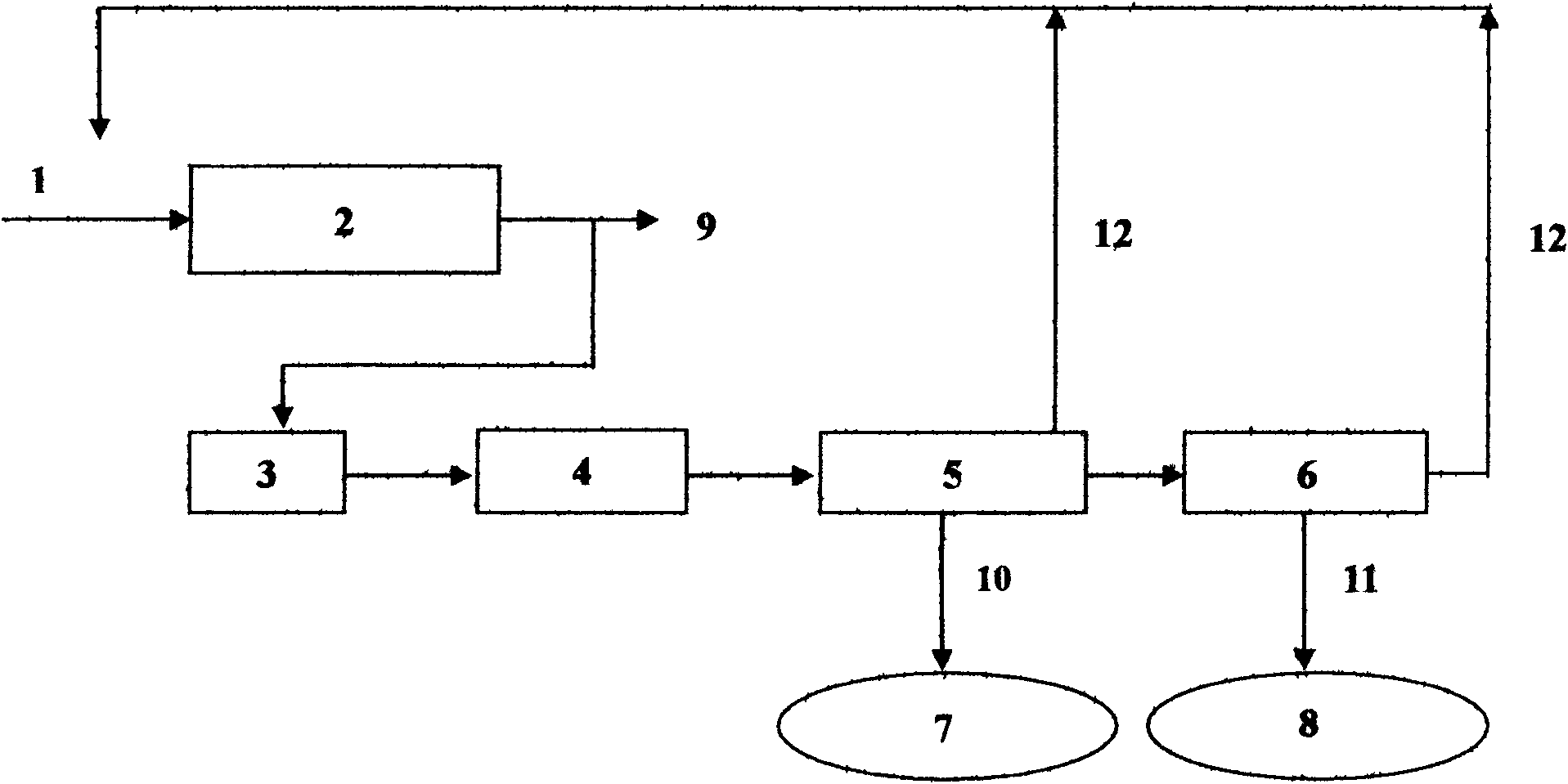Technology for treating and reusing sewerages of industrial circulating water
A technology for industrial circulating water and sewage, which is applied in the direction of adsorption water/sewage treatment, light water/sewage treatment, oxidized water/sewage treatment, etc. It can solve the problem of large cooling water side-flow treatment, acid-base consumption, poor treatment effect, etc. question
- Summary
- Abstract
- Description
- Claims
- Application Information
AI Technical Summary
Problems solved by technology
Method used
Image
Examples
Embodiment 1
[0015] The water sample is taken from a chemical fertilizer plant that uses natural gas as raw material. The circulating water and sewage are directly passed through the photocatalytic oxidation reactor according to step A. The light source is an ultraviolet lamp system, and the photocatalytic material is 1% ammonium molybdate and 1% nickel nitrate , and 1% cobalt nitrate composite loaded titanium dioxide catalyst. The light source part adopts a multi-stage parallel arrangement. The influent COD concentration dropped from 258mg / L to 38mg / L, and the TOC dropped from 80mg / L to 8mg / L. The discharged water meets the first class a standard of urban sewage treatment plant pollutant discharge (GB 18918-2002).
Embodiment 1 proportion 1
[0017] The photocatalytic material uses ordinary titanium dioxide as a catalyst. The light source part adopts a multi-stage parallel arrangement. The concentration of influent COD dropped from 258mg / L to 163mg / L, and TOC dropped from 80mg / L to 54mg / L. The discharged water cannot meet the first class a standard of urban sewage treatment plant pollutant discharge (GB 18918-2002).
Embodiment 1 proportion 2
[0019] The photocatalytic material uses 0.5% ammonium molybdate supported on titanium dioxide as a catalyst. The light source part adopts a multi-stage parallel arrangement. The concentration of influent COD dropped from 272mg / L to 113mg / L, and TOC dropped from 83mg / L to 26mg / L. The discharged water cannot meet the first class a standard of urban sewage treatment plant pollutant discharge (GB 18918-2002).
PUM
 Login to View More
Login to View More Abstract
Description
Claims
Application Information
 Login to View More
Login to View More - R&D
- Intellectual Property
- Life Sciences
- Materials
- Tech Scout
- Unparalleled Data Quality
- Higher Quality Content
- 60% Fewer Hallucinations
Browse by: Latest US Patents, China's latest patents, Technical Efficacy Thesaurus, Application Domain, Technology Topic, Popular Technical Reports.
© 2025 PatSnap. All rights reserved.Legal|Privacy policy|Modern Slavery Act Transparency Statement|Sitemap|About US| Contact US: help@patsnap.com

